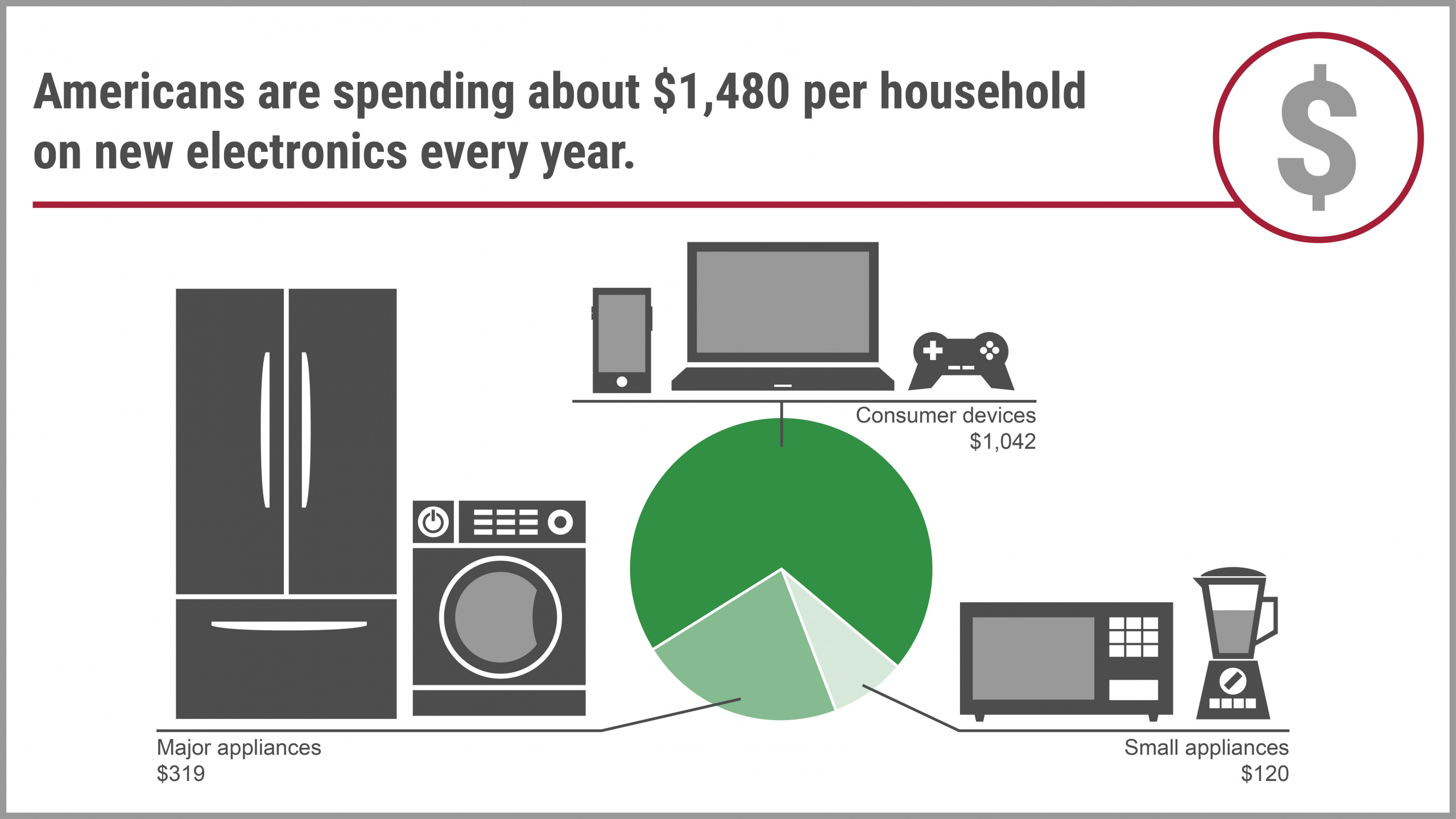Let us fix our stuff
Tell state officials to give every consumer and every small business access to the parts, tools and service information they need to repair products by passing Right to Repair reforms.
A Report by U.S. PIRG
Written by Alex DeBellis and Nathan Proctor, U.S. PIRG
DOWNLOAD THE REPORT

Especially during the pandemic, we rely on the electronic devices in our homes. From our telecommuting to remote learning, from making dinner to doing laundry, we need our devices working.
When our older devices need repair, we might be convinced that it’s easier or better to just replace them. After all, the “new and improved” versions will be better, right? Unfortunately, that’s not always the case, and the products we buy are coming with shorter and shorter lifespans.



On average, Americans have 24 pieces of electronics in their homes. As more things become digital, we are spending more — and replacing more.

Rapidly replacing electronics isn’t sustainable.
The cost of replacing broken laptops, refrigerators, and other electronic products can be burdensome, not only to family budgets, but the environment as well.


When we throw out an electronic product that can be repaired, we contribute to the fastest growing waste stream in the world, while adding toxic elements such as lead, mercury and cadmium into our landfills.
Luckily, repair can help save our families and our planet.

If we repaired products instead of replacing them, we’d save BIG.
Repair saves money — more than you might think. When the cost of repair inches toward the cost of replacement, it might seem like buying the new product is cheaper. But fixing the product and extending its lifespan leads to big savings.


Empowering repair strengthens the local economy.
Not only does repair save families money in a tight economy, but the money people do spend on repair also provides more benefits to the local economy.
Repair makes our communities more resilient. Instead of relying on the global supply chain to bring a never-ending supply of new stuff, repair helps us keep devices going using only local resources. A robust repair ecosystem with more people in our neighborhoods working repair jobs, results in lower repair costs quicker and service. But if manufacturers further restrict repair, downtime and prices go up. Eventually, people give up and buy new.
The money people do spend on repair circulates locally, rather than being sent to manufacturing operations across the country or, more likely, overseas.

With more families staying home, local repair is critical.
Manufacturer backlogs caused millions of students to go without a laptop for remote learning, and a system built on repair and reuse in local settings could have mitigated this.
When the pandemic hit, many people couldn’t afford or even find new appliances. A shortfall of local appliance repair, fueled by restrictions to the field, made the problem worse.

Right to Repair is essential to unleashing repair.
Repair is critical to maintaining our lifestyles and saving money. By relying on local repair, American households can keep their electronic products humming without breaking the bank. However, when manufacturers restrict access to the tools and manuals necessary for repair, they ultimately chip away at the resilience our communities need to bounce back in the face of global disruptions.
Now is a critical time to make Right to Repair the standard. Electronic manufacturers must heed our call to remove barriers to repair. If not, we must call on our state representatives to take action.
Leaders in the capital should be vocal about their support for repair-friendly legislation and demand that manufacturers lower restrictions on necessary tools, parts and manuals. If electronics companies won’t remedy the situation, our legislators must.

Tell state officials to give every consumer and every small business access to the parts, tools and service information they need to repair products by passing Right to Repair reforms.
Sign Up

Methodology
To create a more comprehensive estimate of household spending on electronic products we totaled the average household expenditures from three categories: major appliances, small appliances, and consumer devices.
Average household expenditure on major appliances was $319 from the third quarter of 2018 to the second quarter of 2019 (a 12-month period). Within that same time frame from 2018 to 2019, American households spend an average of $120 on small appliances.
For consumer devices, Statista estimated that the average revenue generated per capita was $401 in 2019. There were an average of 2.6 people per household in the United States in 2019, meaning that average household spending on consumer electronics was approximately $1042.60. In total, we estimated that average annual spending on electronics is $1,481.60 per household.
We determined the average expected lifespan for smartphones, laptops, refrigerators, and washing machines. In addition, we located the average cost to replace or repair these four product types.
We calculated the average annual cost of ownership without repair by dividing average replacement cost by average lifespan for each product. To calculate the average annual cost of ownership with repair, we added the replacement cost of each product with its respective repair cost, then divided by an extended product lifespan.
The process of calculating annual savings entailed subtracting the average cost of ownership with repair from the average cost of ownership without repair for each of the four device categories. This resulted in our estimated total savings of $330.23, per household, just over 22 percent.

Report ●
Report ●